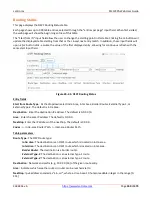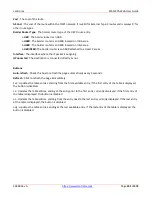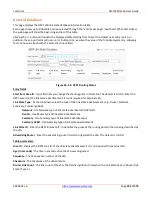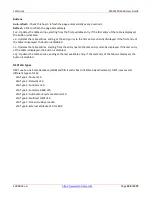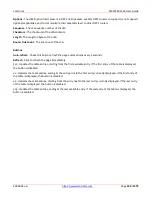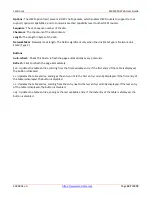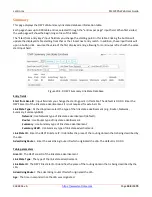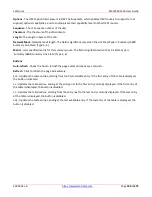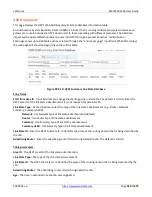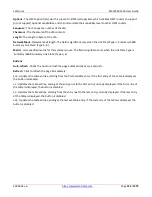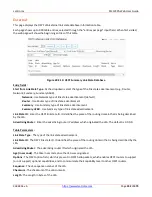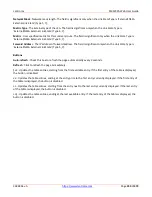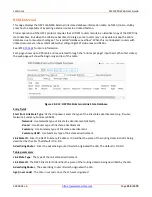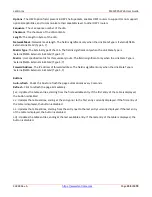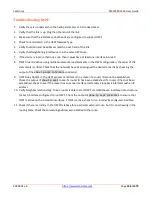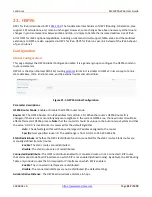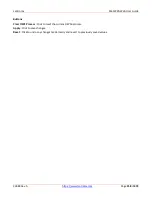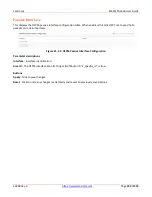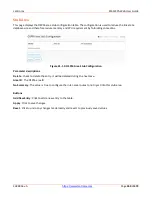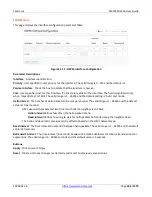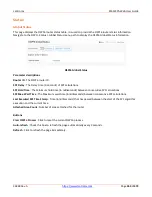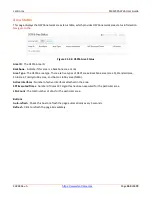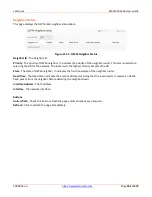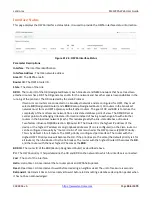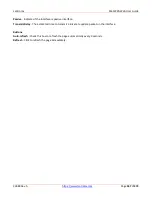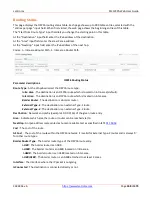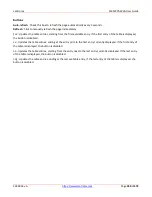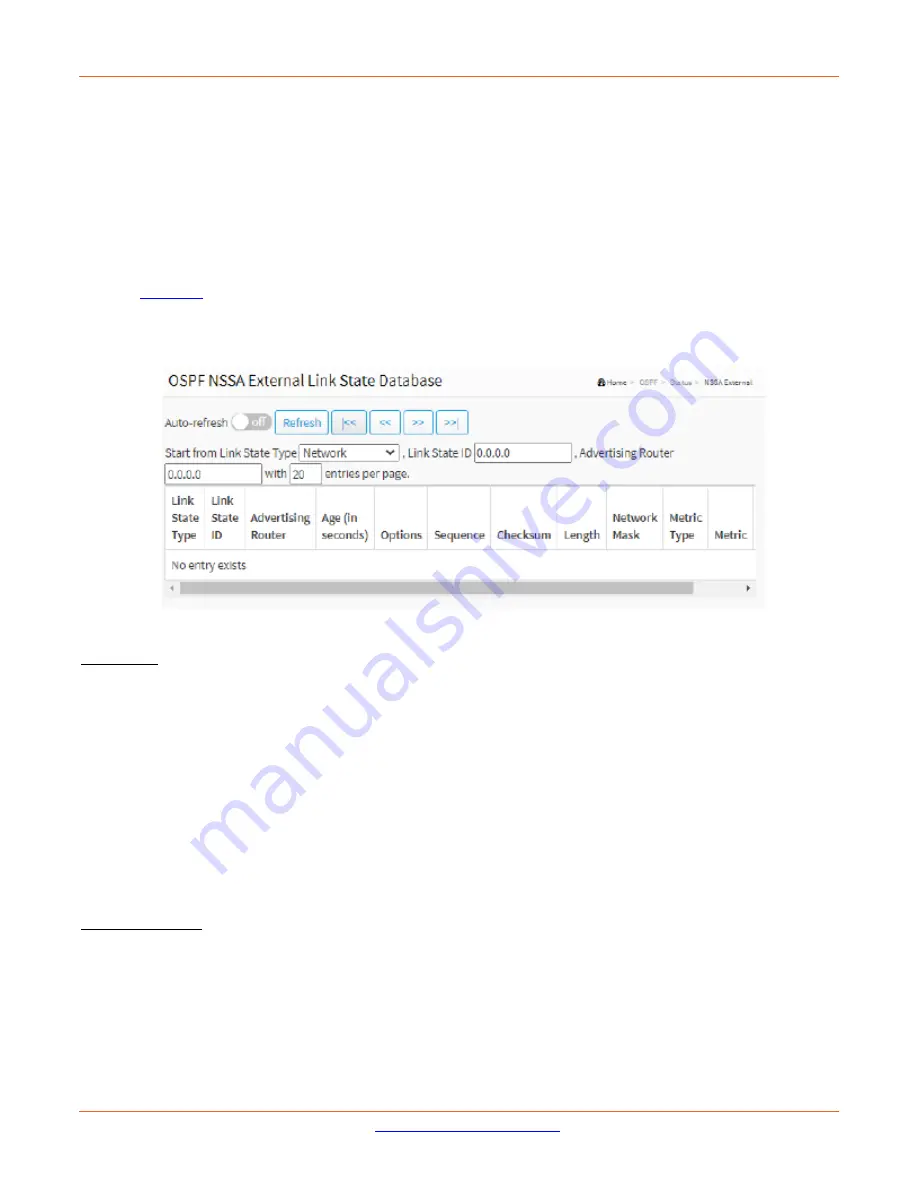
Lantronix
SM12XPA Web User Guide
33848 Rev. A
Page
354
of
473
NSSA External
This page displays the OSPF LSA NSSA External link state database information table. An NSSA (not-so-stubby
area) has the capability of importing external routes in a limited fashion.
Proper operation of the OSPF protocol requires that all OSPF routers maintain an identical copy of the OSPF link
state database. But when the LDSB size becomes too large, some routers may not be able to keep the entire
database due to resource shortages. This is called "database overflow". When this is anticipated, routers with
limited resources can be accommodated by configuring OSPF stub areas and NSSAs.
See IETF
for more information.
Each page shows up to 999 table entries, selected through the "entries per page" input field. When first visited,
the web page will show the beginning entries of this table.
Figure 20-2.12: OSPF NSSA External Link State Database
Entry fields
:
Start from Link State Type
: At the dropdown select the type of the link state advertisement (e.g., Router,
Network, Summary, Summary ASBR).
Network
: Use Network type of link state advertisement (default).
Router
: Use Router type of link state advertisement.
Summary
: Use Summary type of link state advertisement.
Summary ASBR
: Use Summary type of link state advertisement.
Link State ID
: Enter the OSPF link state IP address. It identifies the piece of the routing domain that is being
described by the LSA. The default is 0.0.0.0.
Advertising
Router
: Enter the advertising router ID which originated the LSA. The default is 0.0.0.0.
Table parameters
:
Link State Type
: The type of the link state advertisement.
Link State ID
: The OSPF link state ID identifies the piece of the routing domain being described by the LSA.
Advertising Router
: The advertising router ID which originated the LSA.
Age (in seconds)
: The time in seconds since the LSA was originated.

